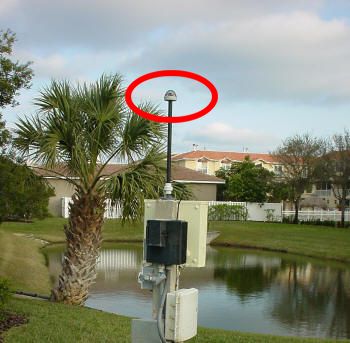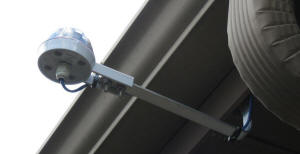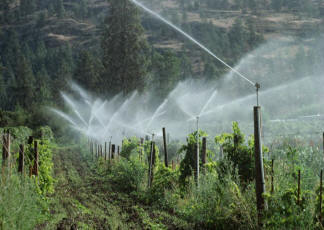Applicable Model: RG-11
The RG-11 Rain Gauge measures both rain accumulation and rain intensity. So, unlike conventional absorbent-disk style rain sensors, the RG-11 inhibit the watering cycle during a downpour, even before water accumulates. This saves water and customer complaints.

This RG-11 controls the irrigation system at a small island community in Florida.Water costs have skyrocketed in recent years, and the RG-11 allows them to keep a lush green lawn as inexpensively as possible.
What is that cheap rain sensor really costing you?
Absorbent disks style rain sensors are cheap, simple, and have been around for decades. Why replace them? Because water is an increasingly scarce resource and the real cost of a too-primitive control is in wasted water. Sure, the acquisition cost of a simple mechanical rain sensor is very low. But the cost over the life of the product can be much higher.
“The RG-11 is a real winner and can become more valuable as the costs of irrigation continues to rise”
– Gerry M
Because the RG-11 has a microprocessor, the set points of system disable and re-enable are precise and optimal. The “evaporation rate” of the irrigation control algorithm is well matched to typical soil conditions, and unlike a mechanical rain sensor, not affected by wind. See the Irrigation Control Strategy for information.
The RG-11 may directly wire into most irrigation systems. See Irrigation Control Wiring Diagrams for detail, or download and print out our Irrigation Control App Note.


Agricultural Irrigation, Too
The irrigation control strategy built into the RG-11 is suitable for many applications. Alternatively, you can use RG-11 as a measurement device for your own control system, for applications such as agricultural irrigation.
